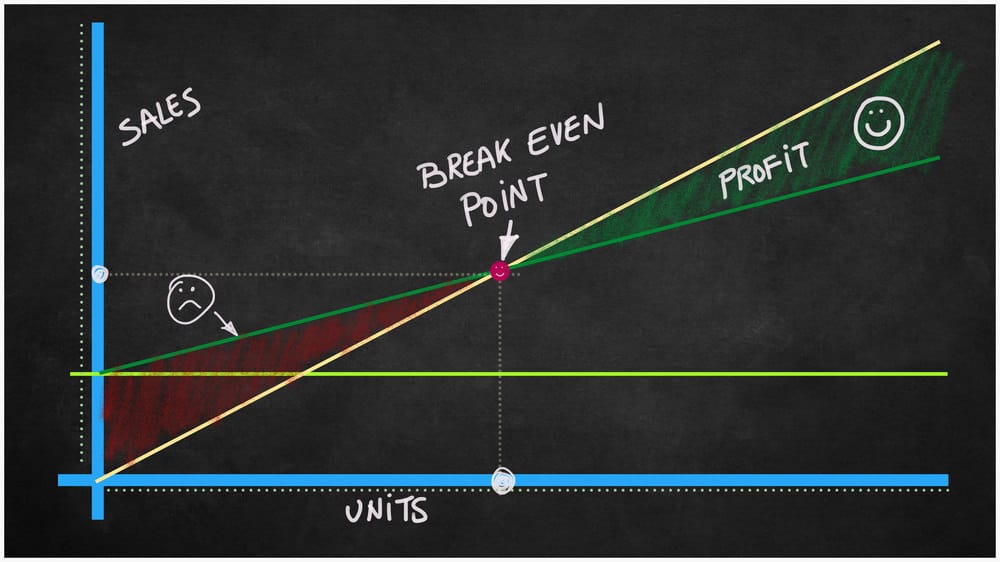I’m not what you’d call an overly analytical blogger. I don’t invest much time or resources into tracking stuff. I don’t have rigid rules when it comes to search volume requirements or keyword difficulty which choosing keywords.
Perhaps my lack of tracking and careful analysis hurts me, but I’m of the view it’s better to focus on building awesome sites pushing out as much quality content as I can and let the chips fall as they may. That’s not to say I don’t do keyword research or assess what’s working and what’s not working. I do some analysis, but I don’t do it so much that it consumes all my time.
I think there’s merit in analytical blogging. It’s akin to being more surgical and striving to get more out of limited time and money. This definitely works for some bloggers. You can bet your bottom dollar the top-tier billion dollar websites invest plenty of resources into careful analysis.
What I do like is coming up with novel approaches to improving my methods, especially if it’s quick, easy and cheap.
This article discusses one such method, which I call the “Breakeven Traffic Volume” approach to keyword research. Here it is followed by how you can apply it to your niche blogs.
The Breakeven Traffic Volume Approach to Keyword Research
This analysis can be applied to choosing keywords for new content or choosing older articles to improve so they attract more traffic.
The concept is this. You figure out how much traffic you typically need per article per month to breakeven. Because there are several variables, this is not an exact science, but it can be a helpful guideline.
The other variable, which you control, is the breakeven timeline. Do you want your content to breakeven in 3 months, 6 months, 1 year or longer? The shorter the duration, the more money you’ll want each article to earn per 1,000 visitors.
Step 1: Figure out your EPMV
EPMV refers to your earnings per 1,000 visitors.
Example: $25 EPMV
The higher your EPMV, the less traffic you to content to generate a profit.
I use these ads in addition to AdSense to really boost my EPMV. Use this software to split test your ads in an effort to increase your EPMV (I used it for a long time until I pinned down the optimal ad configuration for my sites).
I dramatically improved my page views per visitor on mobile and mobile revenue with this technology.
Step 2: Determine your article cost
Example: $60
My average article cost with my content service is $64. That includes formatting it in the backend of my site. Keep in mind that’s an average. The range is $43 to $100+.
The lower your article cost, the fewer number of visits you need to be profitable. However, don’t throw the baby out with the bathwater. In other words, don’t publish garbage content so that it never ranks or gets traffic. It’s a balance. You need to publish the best content you can that will perform at the lowest possible price. This will vary niche-to-niche and article-to-article. I do not spend the same amount on every article. It varies according to what the content requires to be good and its potential.
Step 3: Establish your return on investment (ROI) timeline
Example: 12 months
Overall, if an article breaks even in 12 months, I’m pretty happy. After 12 months, all revenue is profit. That’s pretty good. However, some people might expect a faster ROI. The duration you choose is up to you.
Step 4: Calculate the breakeven traffic volume point
Based on the above figures, you would need 2,400 annual users to break even.
The calculation is 2,400/1,000 x $25 = $60
2,400 annual visitors is 200 visitors per month.
When choosing keywords, choose keywords that have a chance of pulling in traffic that will meet or exceed your breakeven point.
When considering articles to improve, one approach is to improve articles with potential that don’t hit the breakeven point. Once you know your breakeven point, you can find articles don’t meet it and choose those that have the potential to exceed the breakeven point so that as much content as possible delivers a positive ROI.
IMPORTANT
When using this approach for finding keywords for NEW content, keep in mind the following:
- Keyword research software is not 100% accurate. Just because it says a keyword is searched 1,800 times per month doesn’t mean it is.
- The suggested search volume does NOT mean your site will receive that amount of traffic, even if ranked in the top spot in Google search. The percentage of searchers that click the top ranked listing varies by niche, search type and many other factors.
Problems with the Breakeven Traffic Volume Approach
1. Assigns the same EPMV to all articles.
EPMV means earnings per 1,000 visitors. If you know your EPMV for specific articles, you can assess the breakeven point for each article.
If you don’t know the EPMV for each article, you have to use the site average, which isn’t ideal. Some articles earn a lot while others very little per 1,000 visitors.
For example, if you have a page with affiliate links that generate consistent sales, it’s likely that page earns an above average EPMV.
2. Doesn’t factor in the delay for traffic growth.
Newly published articles will not earn much for the first several months. I have some articles that took over a year to rank well and pull in a lot of traffic. Therefore, when analyzing existing articles to update, many with below breakeven visitor volume may grow traffic by doing nothing.
3. Doesn’t factor in additional keywords.
What I mean by this is if you filter out all keywords below your breakeven volume threshold, you’re not taking into account other keywords that drive traffic to your content. You could miss out on good topics due to the filter.
This can partially be solved by adding up search volume for all the similar keywords.
4. Doesn’t contemplate lead generation revenue
If you make money with an email list, this model doesn’t contemplate that revenue unless you know your email profits on a URL basis. Alternatively, you could come up with an average profit via email per 1,000 visitors to your website or eyeball it.
Is this analysis useful?
I think it’s kinda helpful as a keyword research guideline. You have to be flexible. If I found a good topic with 100 searches per month, I’d go after it, especially if it has low competition. I’d count on ranking for other keywords to top up the traffic total.
Where I think it can be more helpful is using it to help decide which existing content to improve in an effort to get more traffic. My approach is to look for content not pulling its weight but targets a keyword with good potential.
I’d ignore the money-losing content that has no or little potential unless I can improve the keyword(s) it targets.
Is improving low-earning articles the best bang for your buck?
It may be.
Improving content takes time and you don’t have unlimited time. If the article has real promise with some improvements, it can very much be worth it. Consider the following:
- Does the keyword it targets have decent search volume?
- Is it an article you can make better than anything published online?
- Perhaps it’s fairly thin for whatever reason and you can capitalize on some big gains by improving it.
However, if it will never be a winner, ignore it. I have a good number of articles that I thought were worth doing, but turned out to be a waste of time. In other instances, I publish content for social traffic, the email newsletter or engagement instead of organic search traffic. Not everything I publish is intended for search traffic.
That said, another approach to improving articles is going after existing articles that are doing well, but still have plenty of potential.
This is not a novel approach I came up with, but I like giving names to methods so I call it the “Almost There” approach to choosing existing articles to improve.
The “Almost There” Approach for Choosing Existing Articles to Improve
This is super easy to analyze if you have Ahrefs.
All you do is filter all the keywords that your site ranks for in Ahrefs or SEMRush for positions 4 to 19 and start picking the ones you think you can improve and that have a lot of potential.
Consider the following ranking scenario:
- Monthly keyword search volume: 18,000
- Your current ranking: 9
- Your current monthly traffic: 4,200
In that situation, there’s some big upside to moving up the ranks. You could potentially double your traffic or more.
However, consider this next scenario:
- Monthly keyword search volume: 3,500
- Your current ranking: 7
- Your current monthly traffic: 900
In this situation, there is some potential, but it’s not huge. If you have quite a bit of content on your site, you likely have better opportunities to go after first.
$1 million question when improving existing content is …
Should you focus improving the current high-earning content so it earns more or invest time fixing up the content not pulling its weight?
I don’t know the answer to this, but I suspect it’s a bit of both.
When choosing which content to improve, look at the potential upside and your chances of succeeding.
For example, suppose your 10th best performing article is currently pulling in 8,000 visits per month. However, the KW it targets gets 28,000 monthly searches. There are also a laundry list of additional related keywords with decent search volume. All this with an Ahrefs keyword difficulty score of 19. That’s an article with some great potential.
If the KD score is 83, you might pass on that. Or if the top keyword gets 9,000 monthly search visits, there’s not much upside.
Another example is if you have a laggard article getting only 50 visits per month but it targets a keyword with 9,000 monthly search volume plus other good keywords. The main keyword has a KD of 16. That article may very well be worth investing more time in because of the potential growth.
On the flip side, if a laggard targets a keyword with 300 monthly searches and there are only a few other related keywords, that may not have sufficient upside to invest time into improving it.
Basically you need to determine what will give you the biggest bang for your buck (or time).
This process is more difficult when you have more articles. I have thousands of articles which means I’ll probably not get to every one. Therefore, I must pick and choose.

Jon Dykstra is a six figure niche site creator with 10+ years of experience. His willingness to openly share his wins and losses in the email newsletter he publishes has made him a go-to source of guidance and motivation for many. His popular “Niche site profits” course has helped thousands follow his footsteps in creating simple niche sites that earn big.







Unfortunately there’s tens of thousands of blogs making similar claims and none of them show you the websites either. I’m not calling you a liar, just saying that this is the same as every other post making claims like this.
Hey John,
Thanks for chiming in. I’m not sure how revealing my websites is relevant to one proposed method for choosing keywords. I would love to reveal my websites but the second I do, thousands of people would copy everything. I could understand if my main business was fatstacksblog.com and my niche sites generated a few hundred or thousand per month in which case I wouldn’t care about the niche sites. But, my niche sites generate substantial revenue so jeopardizing them is not an option.